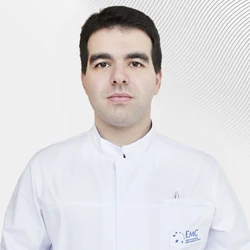One of the diseases that is common in employees who work in the office for a long time is carpal tunnel syndrome. It occurs when the median nerve is mechanically compressed between the three bone walls of this canal and the flexor retainer, which is a dense ligament stretched between the ulnar and radial elevations of the wrist and performs the function of fixing the tendons flexing the hand and fingers.
The European Clinic of Sports Traumatology and Orthopaedics (ECSTO) provides round-the-clock diagnostics, all types of treatment and rehabilitation of carpal tunnel syndrome. When providing medical care, the ECSTO clinic's qualified specialists use modern equipment and European experience to return patients to their usual lives as quickly as possible.
Carpal tunnel syndrome usually affects older women, as well as workers who perform flexion and extensor movements of the hand, or fix the wrist joint in static tension, as it happens when working with a personal computer.
This disease is often referred to as "tunnel syndrome". However, this definition is a general term, and carpal tunnel syndrome is just one variant of tunnel syndrome.
Causes of the disease
The carpal canal is a space bounded on all sides by bone structures and ligamentous apparatus, resembling a tunnel through which a number of tendons and a median nerve pass to the fingers of the hand. With edema or other changes in the size of the anatomical formations that make up the canal, compression of the median nerve occurs with the volume of the canal, which is the main cause of impaired function and pain.
Other causes of the development of this disease include:
- an activity in which the brush constantly bends and breaks;
- age;
- wrist injury;
- bone spurs in the hand;
- thyroid dysfunction;
- rheumatic arthritis;
- diabetes mellitus;
- pregnancy;
- hormonal changes.
Symptoms
The symptoms of the disease often bother the patient at night. Among them are:
- tingling, pain, burning, itching and trembling in fingers;
- finger weakness when squeezed;
- numbness of some fingers or hands;
- pain from wrist to elbow;
- headaches.
Diagnostics
The main diagnostic method is electromyography, i.e. the study of muscle contractile activity depending on the level of electrical stimulation. This study allows us to determine the location of the lesion of the median nerve, as well as identify other causes of carpal tunnel syndrome.
Other diagnostic methods are:
- tapping over the nerve passage, which causes a tingling sensation in the fingers;
- passive flexion and extension of the wrist in the wrist joint, while increasing tingling, numbness and pain;
- cuff test.
Complications
In the absence of proper treatment, carpal tunnel syndrome can lead to complete irreversible nerve damage, as well as serious impairment of hand function.
Treatment of carpal tunnel syndrome
Currently, depending on the severity of the disease, medical, non-medical and surgical treatment are distinguished.
Drug treatment.
The action of medications recommended by a specialist will be aimed at eliminating the cause of the disease, as well as reducing pain and swelling of the median nerve.
Non-drug treatment.
Non-drug treatment involves immobilizing the wrist with a splint, which allows the wrist joint to rest and thereby reduce the mechanical impact on the median nerve.
Surgical treatment.
Carpal tunnel opening surgery is one of the methods of surgical treatment. Surgical intervention is recommended for those patients whose symptoms do not go away for six months or more.
Carpal tunnel opening surgery involves separating the bundles of connective tissue that surround the wrist in order to reduce pressure on the median nerve. The operation is performed under local anesthesia and does not require a long hospital stay. It should be noted that there are two types of surgical intervention:
open access surgery, in which an incision is made up to 5 cm, after which the ligament is crossed in order to increase the volume of the carpal tunnel;
endoscopic intervention, in which two incisions up to 1.5 cm long are performed on the palm and wrist After that, a video camera is inserted, the tissues are examined and the wrist ligament is dissected. This type of intervention is the most effective, characterized by a rapid recovery period and the absence of large postoperative scars.
Physical exercises.
For patients with mild symptoms of the disease, physical exercises that aim to stretch and strengthen the hand may be useful. Note that exercises should only be performed under the supervision of a qualified physiotherapist or rehabilitologist, otherwise they may worsen the situation.
Was this information helpful?
Questions and answers
Ask a Question

















.webp)




.webp)


